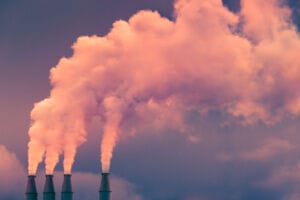|
Addressing congressional staff in Washington, D.C., ecologist Donald Falk warned that decades of fire suppression, coupled with drier and warmer temperatures in some regions, are leading to longer fire seasons, larger fires and greater area burned in the U.S. “The problem is not going away,” said Falk, an associate professor in the University of Arizona’s School of Natural Resources and the Environment, housed in the College of Agriculture and Life Sciences. “It’s going to get bigger, and we’re going to have to live with it without breaking the bank.” The University Corporation for Atmospheric Research, or UCAR, sponsored the Wednesday event, inviting Falk and other experts to speak during the session, which comes during the now-active 2017 U.S. fire season. During the meeting, Falk and others discussed the most recent research findings on wildland fire, the factors that are driving recent trends and the emergent ways to address fire management efforts meant to safeguard property, save lives, protect natural resources and reduce costs. In addition to an enhanced, nationwide understanding of the effects of climate change, prescribed burning during more moderate conditions, fuel reduction treatments and reduction of construction in and around forest areas can significantly reduce damage and loss during wildland fires, said Falk, who has joint appointments in the UA Laboratory of Tree-Ring Research and the Institute of the Environment. Falk also explained the historic prevalence of wildland fires, noting that they have long been natural, self-regulating and sustainable events, often occurring in low intensity and keeping fuel accumulations low. “That was the historic fire regime for millennia,” he said. However, given modern changes in the climate and fire suppression tactics, these low-severity fires generally are put out before they spread. As a result, the only large fires today are associated with extreme weather — and generally arrive with more ferocity. The multiplier effect, Falk said, comes in the form of insect outbreaks, flooding and land erosion, and loss of forests as burned areas convert to shrubs and grass. Also concerning is that costs associated with wildland fires are increasing rapidly, Falk said, and the dramatic increases should continue. In 2016, more than 67,000 wildfires consumed 5.5 million acres across the nation. In total, federal agencies spend more than $2 billion on fire management, an increase of more than 60 percent over the last decade. The U.S. Forest Service now spends more than half of its entire budget on emergency fire suppression efforts, Falk noted. And, as Falk explained, such fires have become far more dangerous. The Chimney Tops 2 fire in Tennessee last year resulted in 14 deaths, destroyed more than 2,400 structures and cost an estimated $500 million. Falk also calls for improved land-use policies, including rethinking policies that allow and even encourage building near and inside national forests, national parks and other public lands. “In this country, we believe people should be able to do what they want on private property. That’s great until we end up with a really serious problem,” he said. “Private property owners tend to expect the public to clean up afterward, but this is the same reason we are no longer building in floodplains. But we really do not have a good system for managing land use. The impact, then, is this collision between wildfire and the people living close to forests. It is getting worse.” In 2013 in Arizona, the devastating Yarnell Hill Fire, which ignited during a lightning storm, resulted in the deaths of 19 Prescott firefighters, all members of the Granite Mountain Hotshots. “The money spent by the federal government on suppressing the fires is only a fraction of the overall costs, such as the destruction of houses and other property,” fellow panelist Michael Gollner, assistant professor at the University of Maryland’s Department of Fire Protection Engineering, said in a statement. “There are more large-scale fires than there used to be, and those are the most dangerous blazes that are particularly expensive and destructive,” Gollner noted. Other panelists, holding collective expertise in ecosystem and atmospheric science, remote sensing and more advanced observing tools, and high-performance computing, were:
The group also presented research on ways that scientists are developing new technologies to better anticipate fire risk and to predict a fire once it has started. These include specialized satellite instruments, unmanned aerial vehicles and computer models that incorporate weather-fire interactions, aspects of vegetation, landscape feature and the physics of fires. “We’re at a turning point where new technologies and advances in basic research are enabling us to tackle a major real-world problem,” Busalacchi said in a statement. “Federal and state agencies, firefighters and scientists are all working together to develop a new generation of tools that will keep firefighters safer, reduce the costs of these massive conflagrations, and better safeguard lives and property.” Falk, who also held one-on-one meetings with members of Arizona’s delegation while in the nation’s capital, said that with decades of research and empirical study, the solutions are now evident. “That old-growth forests have the possibly of disappearing in our lifetime would be consequential for a lot of people, not only because they are beautiful but also because shrubs and grasses sequester far less carbon than trees. This has a compounding effect on climate warming,” Falk said. “But we know exactly what to do, and what we need to do is more a matter of political will than science. We have the science. It won’t be easy. But there are solutions we can implement on a large scale.” |




